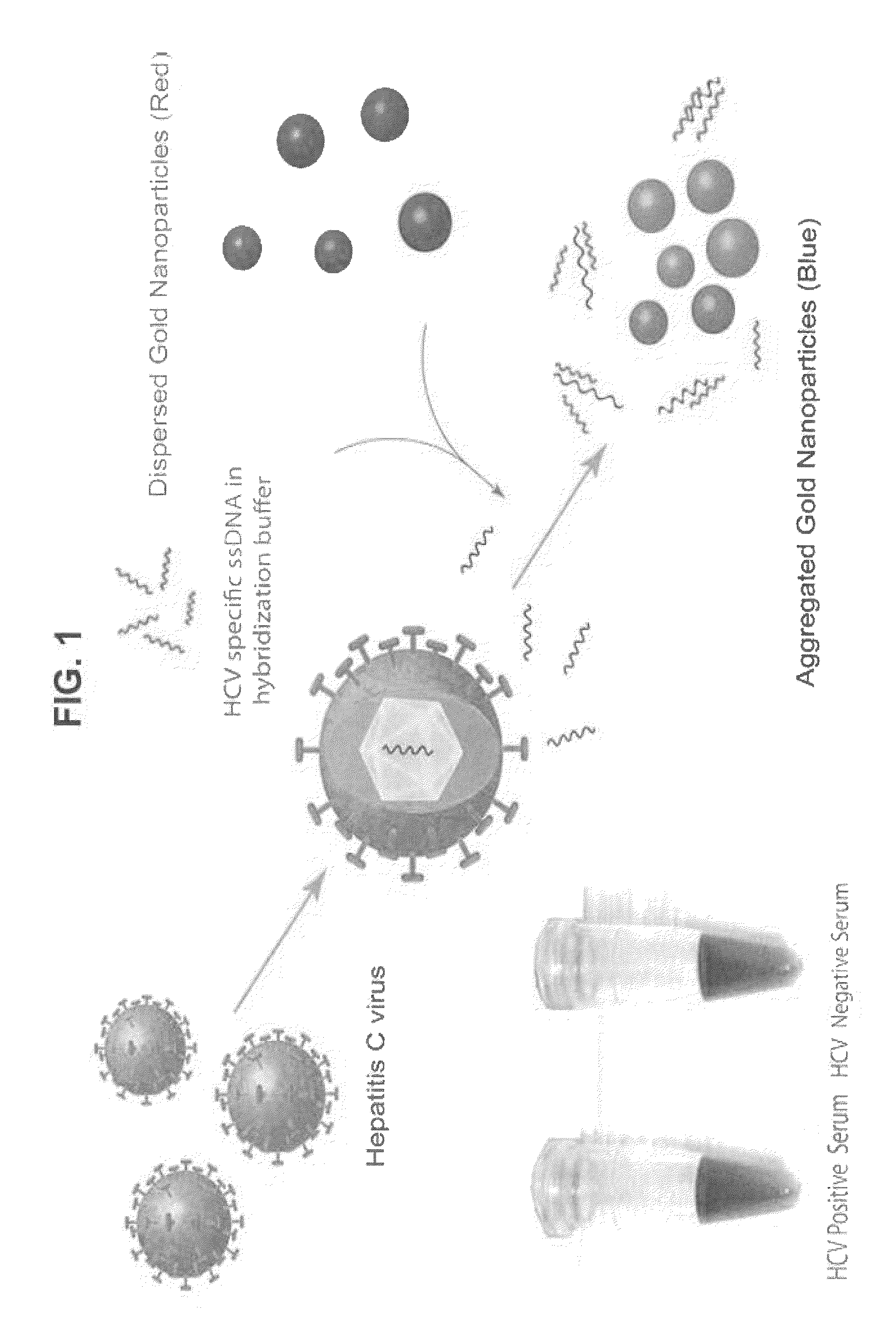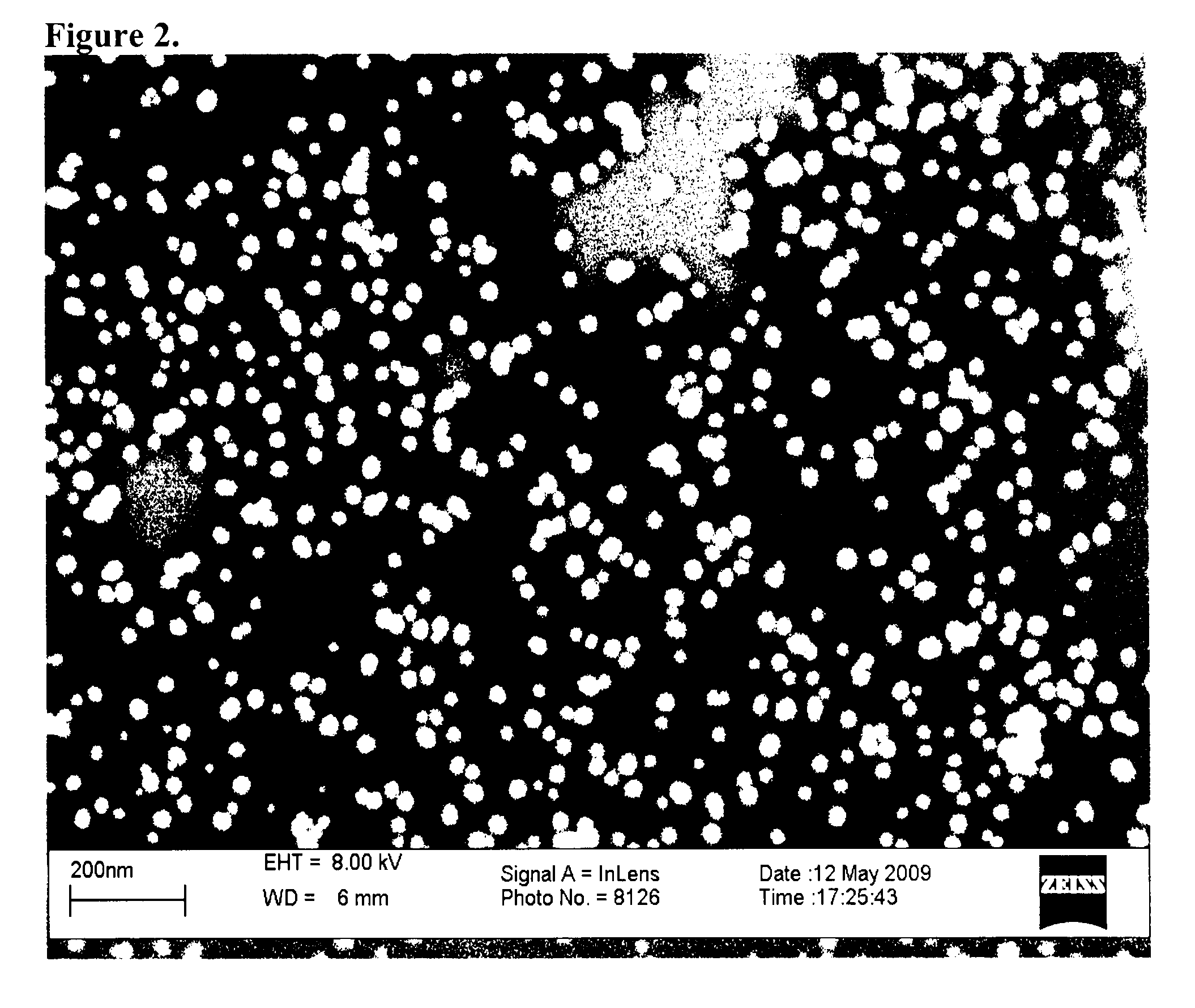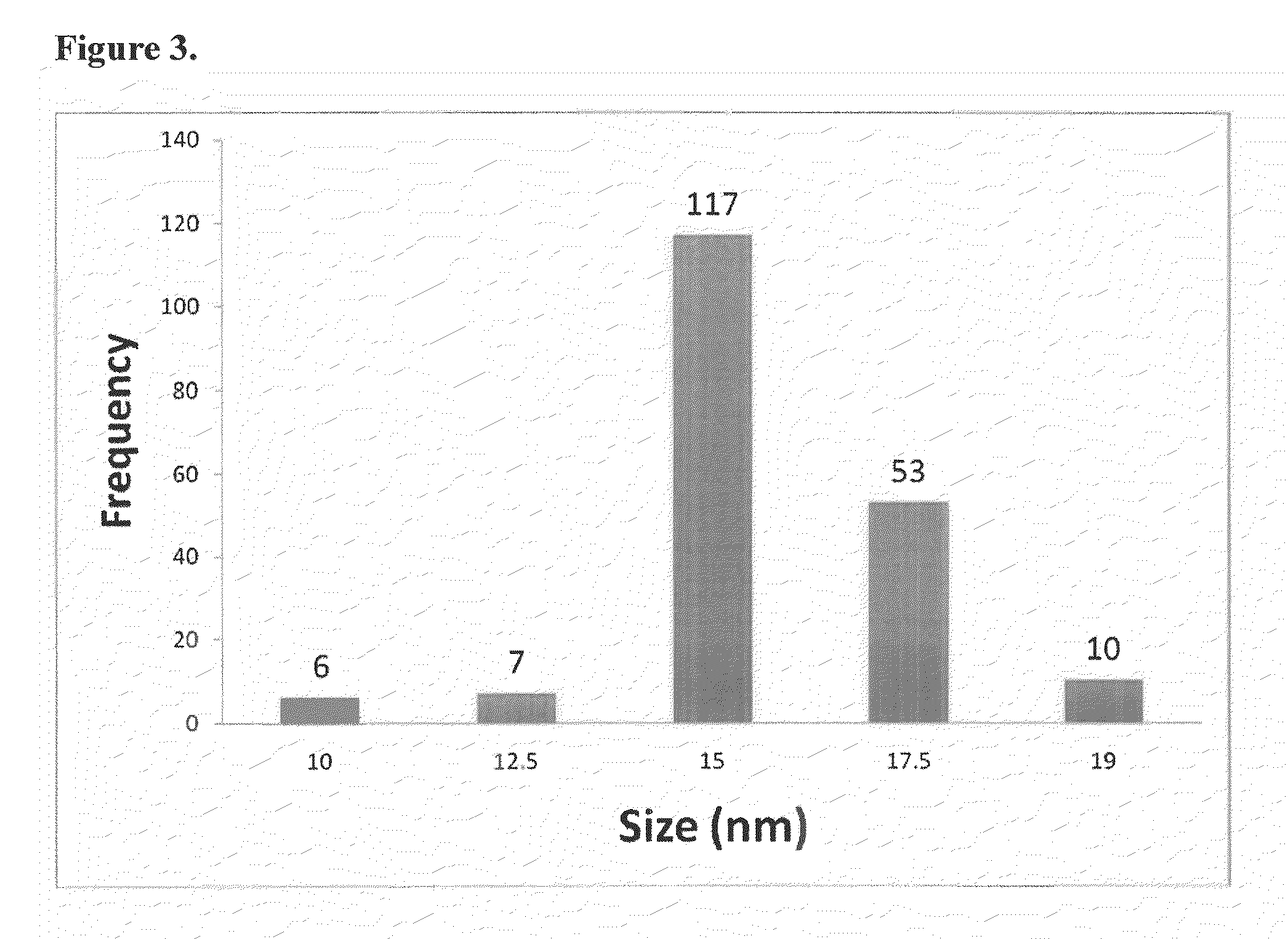Direct detection of unamplified hepatitis C virus RNA using unmodified gold nanoparticles
a colorimetric assay and gold nanoparticle technology, applied in nanotechnology, microbiological testing/measurement, nanosensors, etc., can solve the problem that one hcv genotype does not necessarily confer protection against another, and achieve the effect of sensitive detection of hcv, simple colorimetric assay, and rapid and sensitive detection
- Summary
- Abstract
- Description
- Claims
- Application Information
AI Technical Summary
Benefits of technology
Problems solved by technology
Method used
Image
Examples
example 1
Synthesis of AuNPs
[0085]A colloidal solution of AuNPs with a diameter of 15 nm±2 was prepared by citrate reduction of hydrogen tetracloroaurate (III) (HAuCl4.3H2O) as described elsewhere [16]. Briefly, the reflux system was cleaned by aqua regia and then rinsed with ultrapure water, and blown out with N2. An aqueous solution of HAuCl4.3H2O (1 mM, 100 mL) was brought to reflux while stirring, then 10 mL of 1 trisodium citrate (38.8 mM) were added quickly. This resulted in consequent change in solution color from yellow to clear to black to purple to deep red. Afterwards, the solution was refluxed for an additional 15 minutes and then allowed to cool to room temperature. The colloidal solution was then filtered through 0.45 μm acetate filter, and transferred into a clean storage glass bottle.
example 2
Characterization of AuNPs
[0086]Size and distribution of the prepared AuNPs were characterized using field emission scanning electron microscopy (Model: Leo Supra 55). One drop of the AuNPs solution was added onto a silicon slide that was allowed to air dry before examination. The λmax for AuNPs was measured using UV spectrophotometer (Jenway 6800). The concentration of the prepared AuNPs was calculated as described previously [17], which is incorporated by reference.
example 3
Serum Sample Collection and Processing
[0087]Seventy five serum samples were collected from healthy volunteers (n=45) and chronic HCV patients (n=30). All samples were negative for hepatitis B surface antigen and hepatitis B antibody. All positive samples have elevated ALT and AST levels. Rapid HCV test was performed on all the samples. Viral load of HCV positive samples was determined by real-time PCR (Artus kit; Qiagen).
[0088]HCV RNA Extraction: Extraction of RNA from serum samples was assessed using three different kits: QIAamp Viral RNA kit (Qiagen; Cat. No. 52904), Absolute RNA Miniprep Kit (Stratagene; Cat. No. 400800) according to standard manufacturer's instructions, and SV total RNA isolation system (Promega; Cat. No. Z3100) according to the modified manufacturer's protocol for HCV RNA isolation [18] which is incorporated by reference.
[0089]Cell free DNA may fragment and may interfere with the assay. These fragments can lead to false negative results due to their adsorption ...
PUM
| Property | Measurement | Unit |
|---|---|---|
| diameter | aaaaa | aaaaa |
| diameter | aaaaa | aaaaa |
| temperature | aaaaa | aaaaa |
Abstract
Description
Claims
Application Information
 Login to View More
Login to View More - R&D
- Intellectual Property
- Life Sciences
- Materials
- Tech Scout
- Unparalleled Data Quality
- Higher Quality Content
- 60% Fewer Hallucinations
Browse by: Latest US Patents, China's latest patents, Technical Efficacy Thesaurus, Application Domain, Technology Topic, Popular Technical Reports.
© 2025 PatSnap. All rights reserved.Legal|Privacy policy|Modern Slavery Act Transparency Statement|Sitemap|About US| Contact US: help@patsnap.com



